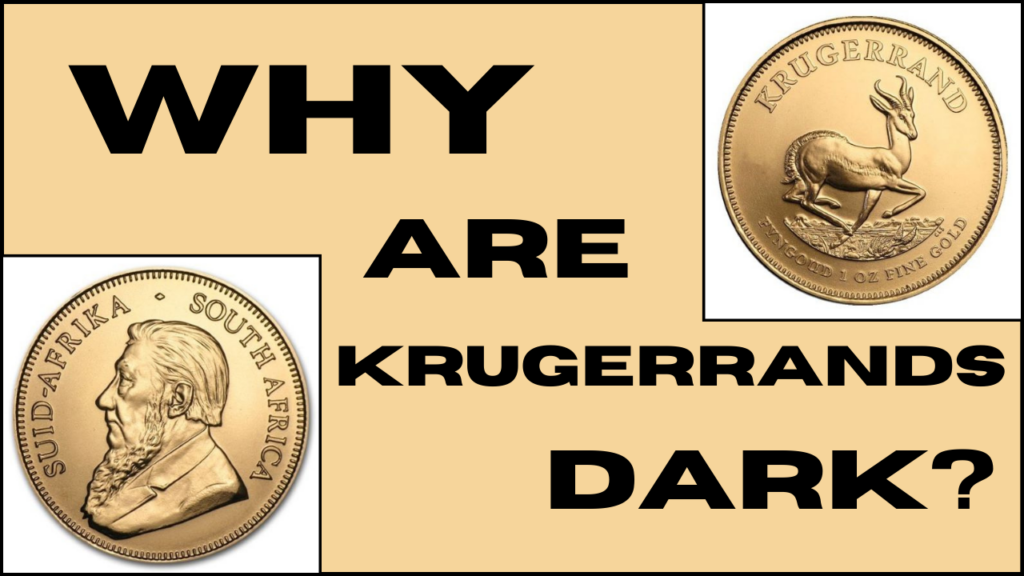
Why are Krugerrands Darker than other Gold Coins?
The distinctive dark appearance of Krugerrands has intrigued investors and collectors alike. Krugerrands are renowned South African gold bullion coins, first minted in 1967 as a means to market gold.
The color can primarily be attributed to the specific alloy used in its creation. Unlike some other gold coins that boast a higher purity, Krugerrands are minted using a copper alloy which is 8.33% of its total composition, combined with 91.67% gold.
This composition not only lends the Krugerrand its darker hue compared to other gold coins but also makes it more durable for handling and circulation.
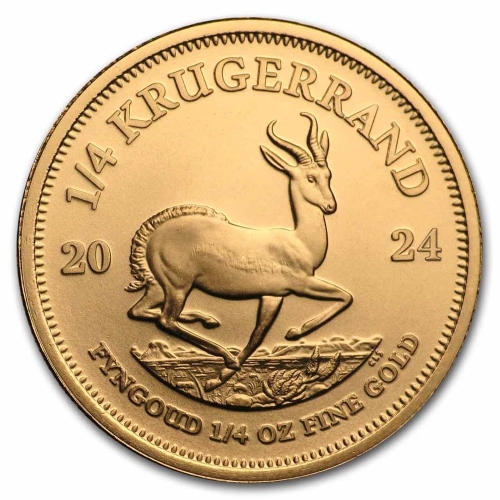
The alloying with copper, referred to as crown gold, adds to the Krugerrand’s distinctive coloration, setting it apart from the lighter appearance of 99.99% pure gold coins. This particular color has contributed to the Krugerrand’s identity on the global stage as one of the most recognized bullion coins.
It serves as a balance between purity and functionality, the toned appearance marking it as distinct from investment pieces meant for display or storage rather than frequent handling.
Key Takeaways
- Krugerrands are darker than other gold coins due to their unique copper-gold alloy.
- The coin’s durability and distinctiveness are enhanced by this alloy composition.
- Krugerrands are a globally recognized gold bullion coin with investment and collectible appeal.
History and Background of Krugerrands
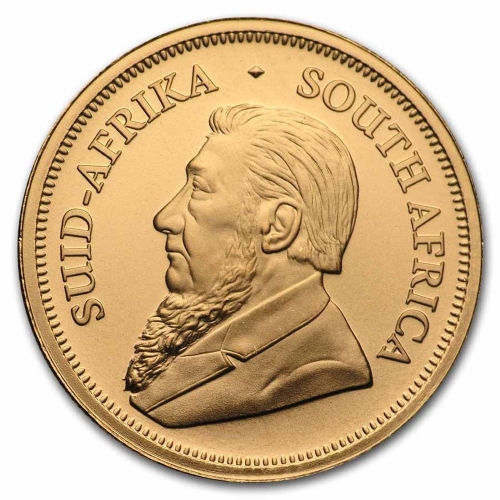
Krugerrands hold a key position in South African history as gold coins intrinsically tied to the nation’s economic and political narrative. Their existence offers insight into South Africa’s past, both economically and in terms of its poignant apartheid era.
Origin and Significance of the Name
The Krugerrand is named after Paul Kruger, a four-term President of the former South African Republic, and the Rand, the South African unit of currency. This coin was first minted in 1967 by the South African Mint to assist in marketing gold produced by South Africa.
Role in South African Economy
As an innovative means of marketing South African gold, the Krugerrand became a pivotal economic tool. Its release catalyzed the creation of an accessible gold bullion market, bolstering the global trade of South African gold.
Impact of Apartheid on Global Trade
During the apartheid era, international opposition to South Africa’s apartheid policies grew, leading to economic sanctions. Consequently, Krugerrands were banned by several countries, making them a symbol of the apartheid regime’s isolation from the global community. These sanctions were a form of protest against the apartheid government and its policies, reflecting the coin’s complex historical significance.
Physical Characteristics
Krugerrands are distinguished by their unique coloration and robust construction. These features stem from their specific material composition and are a testament to the coin’s blending of value and durability.
Investment Attributes

The Krugerrand serves as a stalwart addition to investors’ portfolios, recognized for its value retention and liquidity in the gold bullion market. Here the focus is on how Krugerrands operate within the investment sphere, specifically their place in market trading and their comparison to other bullion coins.
Market and Trading of Krugerrands
The South African Gold Krugerrand has carved a niche for itself in the international bullion market, being the first gold coin to contain precisely one troy ounce of gold.
Traders often use the Krugerrand as an investment vehicle due to its high liquidity and consistent trade value, which closely tracks the gold spot price.
Krugerrands are not just prized for their gold content but also for their historical and symbolic value. They are globally recognized, making them easily tradable across major gold markets and exchanges, enhancing their appeal to both novice and seasoned investors.
Comparison with Other Bullion Coins
When placed side-by-side with other prominent gold bullion coins, such as the American Gold Eagle, Canadian Gold Maple Leaf, Australian Nugget, and Chinese Gold Panda, the Krugerrand holds a distinctive place.
While all these coins are substantial in terms of investment and collecting, the Krugerrand is often praised for its durability, which comes from a small copper content that makes them more resistant to wear and tear. This attribute could potentially preserve their condition and appeal over time, thus possibly influencing their resale value.
It’s important to note, however, that although these coins may differ in purity, design, and legal tender statuses, they all serve as a reliable representation of their contained gold’s inherent value in the global bullion market.
Legal and International Status
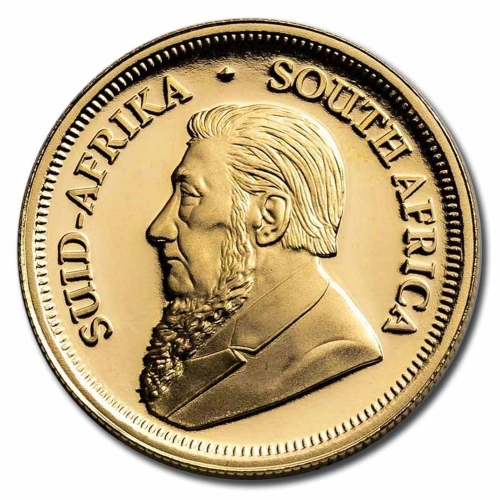
The transfer and possession of Krugerrands have a complex history shaped by political climates, particularly due to sanctions against South Africa’s former apartheid government. Today, their legal status varies across the world, influencing their presence in the global gold coin market.
Regulations and Restrictions
In the 1980s, several Western nations, including the United States, implemented a ban on Krugerrands as a form of economic sanctions against apartheid. The Regan administration called for the ban of importing Krugerrands in 1985, which impacted South Africa’s economy.
Although Krugerrands were never illegal to own in the U.S., and ownership remained legal, the import ban caused confusion and led many to believe the coins themselves were illegal. Following the end of apartheid, restrictions eased, and Krugerrands regained their status as globally traded bullion coins.
Krugerrands in the Global Gold Coin Market
Krugerrands have reestablished their standing in the global gold coin market as a popular option for investors seeking to diversify their portfolios with gold assets. They are recognized worldwide and continue to be legal tender in South Africa.
As gold bullion coins, their value is primarily based on the market price of gold rather than face value, which makes them highly valued for their precious metal content over nominal monetary value.
Despite past regulations, Krugerrands are actively traded in major markets across various countries, contributing to the dynamics of gold investment globally.
Collectability and Numismatic Value
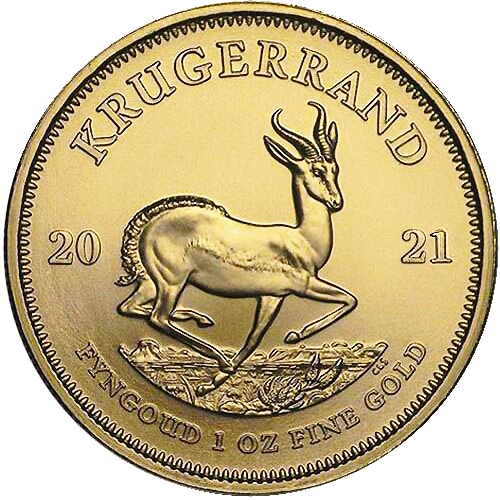
Krugerrand coins have emerged as both an investment in precious metals and a numismatic collectible, appealing to a diverse range of interested parties, especially those who value the coin’s unique history and its variants in gold, silver, and platinum.
Krugerrands for Collectors
For collectors, the appeal of the South African Krugerrand lies in its rich history and status as one of the first bullion coins available to the general public. Its distinctive shade, a result of its 91.67% gold composition with the remainder copper, makes it easily recognizable.
The blend not only imparts a more durable finish but also gives the coins their signature rose-tinted hue.
Collectors often seek out rare or unusual editions, including those minted during specific years that may have had lower production numbers, or coins with particular historical significance.
The standard one-ounce coin is highly traded, but smaller denominations such as 1/2 oz, 1/4 oz, and 1/10 oz offer variety and accessibility to a wider audience.
Special Editions and Proof Versions
Proof versions of Krugerrands, often minted in limited quantities, provide a higher level of detail and mintage quality, with a resulting numismatic premium.
These special editions are especially coveted for their rarity and the meticulous care taken in their production.
The introduction of the silver Krugerrand in 2017 added variety to the primarily gold-based series, and the platinum Krugerrand offers yet another option for collectors seeking diversity in precious metals.
These versions are not only appealing for their material value but also for their potential rarity as collectibles. Proof coins in either silver or platinum are particularly sought after due to their higher rarity compared to standard bullion versions.
Krugerrands in Modern Times

Krugerrands continue to be a staple in the precious metals market, with their long-standing legacy upheld by the South African Mint Company. These coins play a significant role in diversification strategies for investors’ portfolios, serving as a hedge against inflation and market volatility.
Production and Purity Standards
South African Mint Company and Rand Refinery are the keystones behind the production of Krugerrands. These entities ensure that each coin meets stringent purity and weight standards.
Krugerrands are minted from gold sourced primarily through gold mining in South Africa and maintained with a consistent gold content of 1 troy oz for the standard coin, with additional denominations available, including 1/2 oz, 1/4 oz, and 1/10 oz.
The coins boast a purity of 22 karats, a standard that allows for greater durability due to the addition of a small proportion of copper, giving them their distinct reddish tint.
Role in Diversifying Investment Portfolios
For gold investors, Krugerrands offer a tangible asset that can diversify investment portfolios. Investors often choose these gold coins to protect wealth due to gold’s historical performance as a hedge against inflation.
The range of available sizes provides choice and flexibility, accommodating different investment capacities. The premium on Krugerrands reflects not just the gold content but also the cost of production, demand in the market, and their perceived value in the economy.
As a result, they often circulate at prices above the current gold spot price, with investors recognizing their worth in protecting assets amidst economic fluctuations.
Symbolism and Cultural Representations
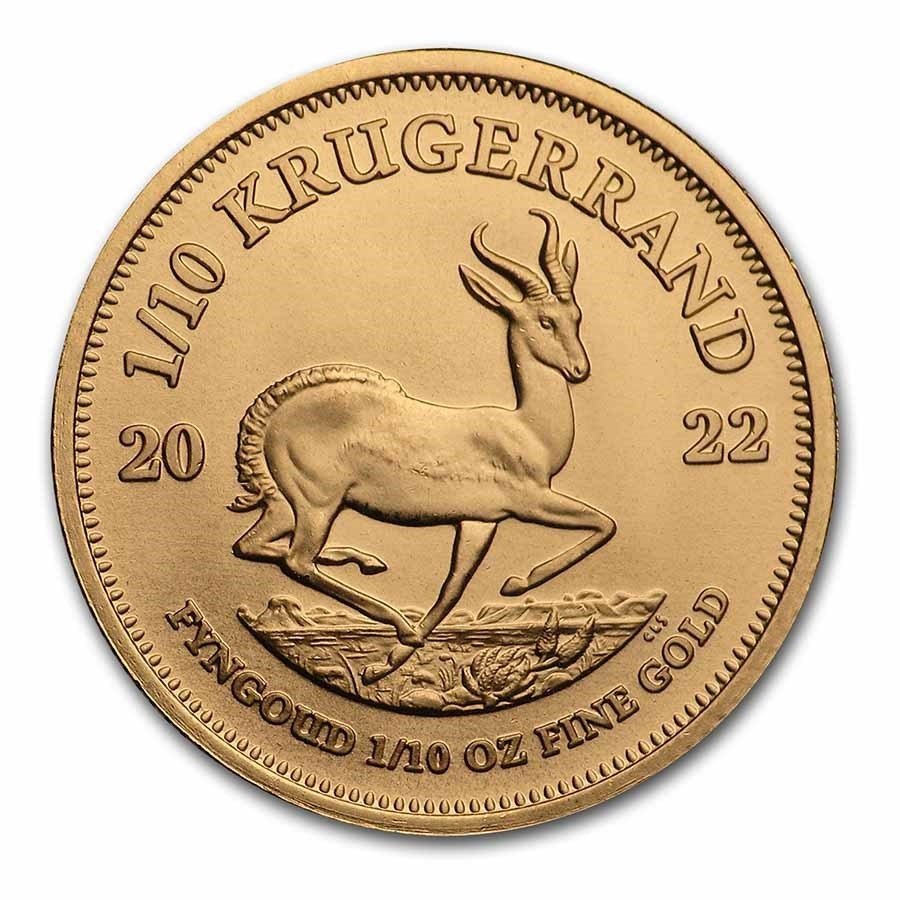
The Krugerrand is replete with symbols that not only represent South Africa’s natural heritage but also its historical narrative. Each feature holds significance and conveys a story to those who examine the coin.
Imagery on the Krugerrand
The obverse side of the Krugerrand features the likeness of Paul Kruger, the former President of the South African Republic. His image symbolizes the political history and past governance of the nation.
Kruger is an iconic figure in South African history, and his presence on the coin represents a pivotal era for the country.
Springbok as National Symbol
On the reverse, the Krugerrand displays an image of the Springbok antelope, which is one of South Africa’s most renowned national symbols.
This mid-sized antelope is noted for its grace and agility, especially the characteristic leaping or pronking behavior it displays when startled or excited. As a symbol on the currency, it embodies the spirit and natural beauty of South Africa.
The Springbok serves as a connection to the country’s diverse ecosystems and is a significant part of the national identity, reflecting the importance of wildlife in South African culture.
Frequently Asked Questions
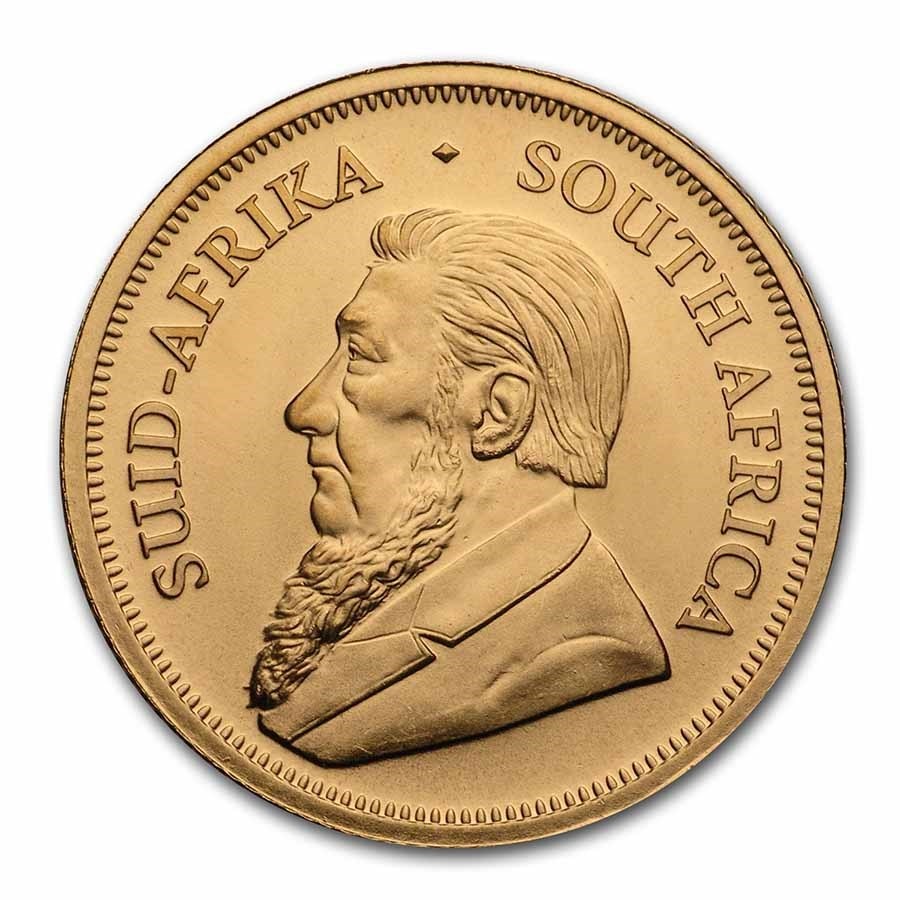
Understanding the distinct attributes of Krugerrands is crucial for collectors and investors. The topics below address common inquiries regarding their unique characteristics, verification, and legal status.
What causes the unique coloration of Krugerrands?
The distinctive color of Krugerrands is due to their high copper content. While they contain one troy ounce of gold, they are alloyed with copper to create a more durable coin, resulting in their slightly reddish tint compared to other gold coins.
How can authenticity of Krugerrands be verified?
You can verify the authenticity of Krugerrands through several methods, including assessing weight, dimensions, and the design details. Acquiring coins from reputable dealers and using professional authentication services are prudent practices.
What are the legal status of Krugerrands in various countries?
Legal restrictions on Krugerrands have varied historically due to political reasons. Today, they are legally traded in most countries, though it’s always prudent to check the current regulations of one’s home country regarding their importation and trade.
Why might Krugerrands appear darker than other gold coins?
Krugerrands may appear darker than other gold coins due to their copper alloy which may tarnish over time, influencing the appearance and tone of the coin.
Are there distinct characteristics that define a Krugerrand’s appearance?
A Krugerrand’s appearance is defined by its springbok engraving, the portrait of Paul Kruger, and its slightly orange-red hue from the copper alloy. These features, along with its reeded edge, distinguish it from other gold bullion coins.
What is the typical hue of a genuine Krugerrand coin?
A genuine Krugerrand coin typically exhibits a warm, golden-orange hue. This hue results from its 22-karat gold composition that includes 8.33% copper.


